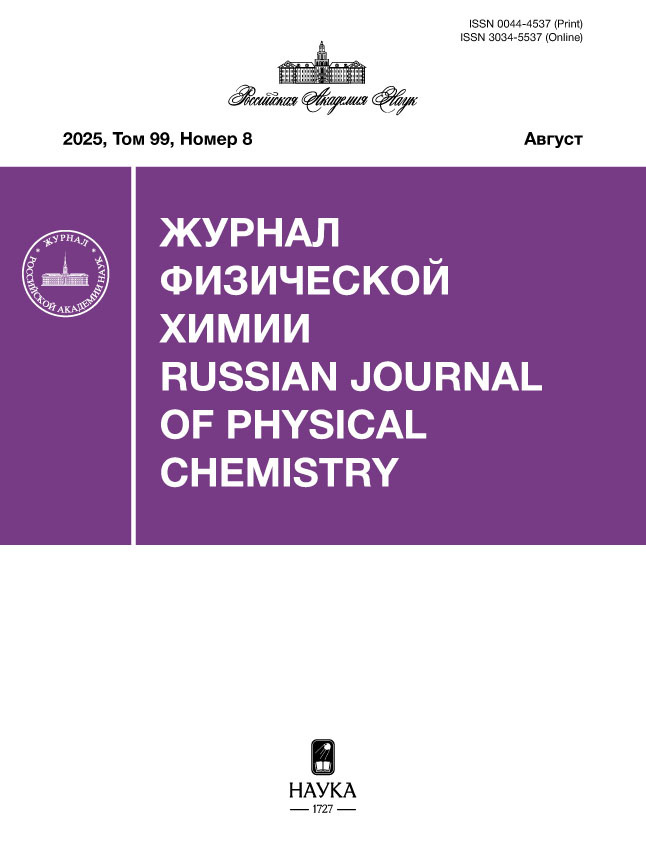Comparative analysis of chromatograph mass spectrometric ways of detecting impurities in a concentrated hydrogen peroxide–rocket fuel oxidizer
- Authors: Samukhina Y.V.1, Glushko A.N.1,2, Buryak A.K.1
-
Affiliations:
- Frumkin Institute of Physical Chemistry and Electrochemistry Russian Academy of Sciences (IPCE RAS)
- Rocket Fuel Component Supply Center, a Branch of Ground Space Infrastructure Facilities Operation Center
- Issue: Vol 99, No 3 (2025)
- Pages: 442–449
- Section: PHYSICAL CHEMISTRY OF SEPARATION PROCESSES. CHROMATOGRAPHY
- Submitted: 03.06.2025
- Published: 29.05.2025
- URL: https://gynecology.orscience.ru/0044-4537/article/view/682024
- DOI: https://doi.org/10.31857/S0044453725030099
- EDN: https://elibrary.ru/ECHMZK
- ID: 682024
Cite item
Abstract
In rocket launchers, where operational safety and high reliability are key factors, environmentally friendly propellants, in particular, hydrogen peroxide solutions, are widely used as fuel. The authors study the composition of highly concentrated hydrogen peroxide as an oxidizer for liquid rocket fuels. Different areas of using chromatograph mass spectrometry in the aerospace industry are considered. A comparative analysis is performed for ways of detecting and measuring impurities in highly concentrated hydrogen peroxide by means of chromatograph mass spectrometry.
Full Text
About the authors
Yu. V. Samukhina
Frumkin Institute of Physical Chemistry and Electrochemistry Russian Academy of Sciences (IPCE RAS)
Author for correspondence.
Email: juliesam2008@mail.ru
Russian Federation, 31-4, Leninsky prospect, Moscow, 119071
A. N. Glushko
Frumkin Institute of Physical Chemistry and Electrochemistry Russian Academy of Sciences (IPCE RAS); Rocket Fuel Component Supply Center, a Branch of Ground Space Infrastructure Facilities Operation Center
Email: juliesam2008@mail.ru
Russian Federation, 31-4, Leninsky prospect, Moscow, 119071; Moscow, 129110
A. K. Buryak
Frumkin Institute of Physical Chemistry and Electrochemistry Russian Academy of Sciences (IPCE RAS)
Email: juliesam2008@mail.ru
Russian Federation, 31-4, Leninsky prospect, Moscow, 119071
References
- Schneider S., Hawkins T., Ahmed Y., et al. // Angew. Chem. 2011. V. 50. P. 5886.
- Dankanich. J., Liou L, Alexander L. L. // AERO. 2010. P. 5446769.
- Edwards T. // J. Propul. Power. 2003. V. 19. P. 1089.
- De Iaco Veris A. // Fundamental Concepts of Liquid-Propellant Rocket Engines. Springer. Cham. 2021. P. 1.
- Remissa I., Jabri H., Hairch Y., et al. // Eurasian Chem.-Technol. J. 2023. V. 25. P. 3.
- Nosseir A. E.S., Cervone A., Pasini A. // Aerospace. 2021. V. 8. № 1. P. 20.
- Bhosale V. K., Jeong J., Kwon S., et al. // Combustion and Flame. 2020. V. 214. P. 426.
- Rarata G., Florczuk W., Smetek J. // J. of Aerospace Science and Technology. 2016. V. 1. Р. 42.
- Gramatyka J., Paszkiewicz P., Grabowski D., et al. // Aerospace. 2022. V. 9. Р. 297.
- Whitmore S. A., Armstrong I. W., Heiner M. C., et al. // Aeronautics and Aerospace Open Access J. 2018. V. 2. № 6. Р. 334.
- Kopacz W., Okninski A., Kasztankiewicz A., et al. // FirePhysChem. 2022. V. 2. № 1. P. 56.
- Rhodes B. L., Ronney P. D. // J. of Propulsion and Power. 2019. V. 35. № 3. P. 595.
- Emerce N. B., Kokal U., Yıldız U. C., et al. //Applied Catalysis A: General. 2024. V. 670. Р. 119516.
- Yang Y., Ye Y., Shen R. // Catalysts. 2024. V. 14. Р. 39.
- Kang S. // Acta Astronaut. 2023. V. 205. Р. 47.
- Shahrin M. S.N., Othman N., Nik Mohd N. A.R., et al. // CFD Letters. 2021. V. 13. № 12. Р. 1.
- Whitmore S. A., Martinez C. J., Merkley D. P. // Aeronautics and Aerospace Open Access Journal. 2018. V. 2. № 6. Р. 356.
- Harikumar P. S., Litty Josephand Dhanya A. // J. of Environmental Engineering & Ecological Science. 2013. P. 1.
- Trushlyakov V. I., Urbansky V. A., Yudintsev V. V. // J. of Spacecraft and Rockets. 2021. Vol. 58. № 3. Р. 685.
- Nimmerfroh N., Walzer E., Brossmer C. // Eur. Space Agency. 2001. V. 484. P. 77.
- Buryak A. K., Serdyuk T. M. // Russ. Chem. Rev. 2013. V. 82. № 4. P. 369.
- Schneider S., Hawkins T., Ahmed Y., et al. // Angew. Chem. Int. Ed. 2011. V. 50. P. 5886.
Supplementary files











